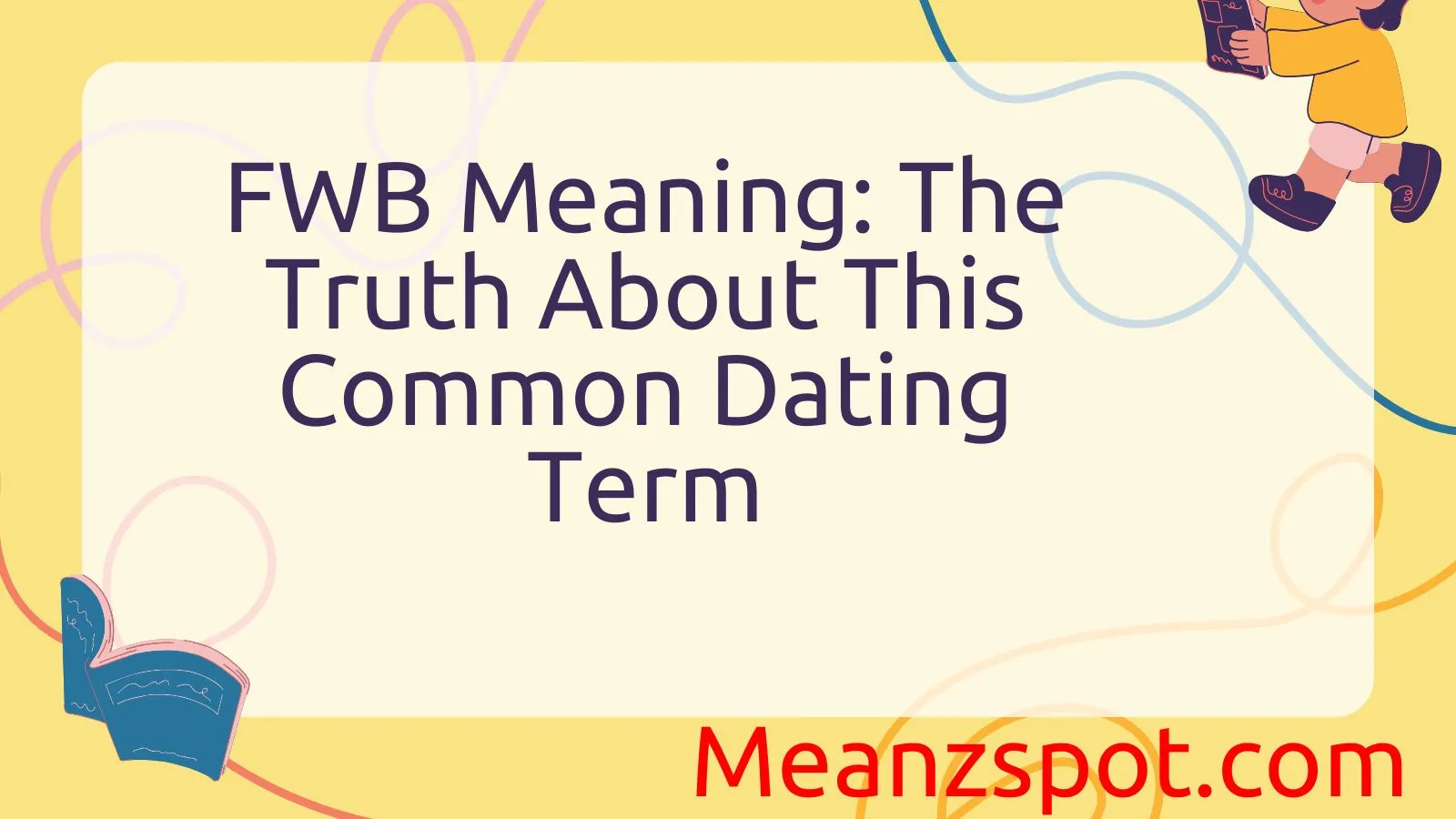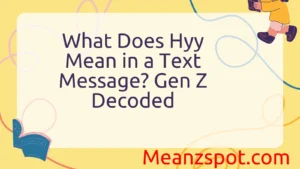In today’s dating culture—shaped by texting, social media, and hookup apps—abbreviations like FWB are everywhere. If you’ve come across this term and wondered what it really means, you’re not alone. The acronym FWB stands for “Friends With Benefits”, and it’s one of the most talked-about relationship dynamics in 2025.
Unlike traditional relationships, FWB involves two people who maintain a friendship while also engaging in a physical relationship—without emotional or romantic commitments. Sounds simple? Not always. In the world of Gen Z, TikTok trends, and dating app bios, FWB can carry a mix of excitement, confusion, and blurred lines.
Whether you’re curious about starting an FWB situation or trying to decode someone’s intentions, understanding what this term truly means is crucial. In this guide, we’ll break down the real meaning of FWB, explore how it works, its pros and cons, and the unspoken rules you need to know.
Definitions & Meaning
FWB stands for “Friends With Benefits.” In texting and casual conversation, it refers to a type of relationship between two people who are friends but also engage in sexual activities without the expectations of a romantic commitment.
Key Aspects of FWB:
- Friendship-Based: At its core, the relationship is still rooted in friendship.
- Non-Committal: There are no obligations to enter a traditional romantic partnership.
- Mutual Agreement: Both parties typically agree to the terms and boundaries.
- Casual Nature: Unlike dating, FWB relationships are usually casual and may or may not involve emotional intimacy.
For example:
- Text message: “I’m not looking for anything serious, just an FWB type situation.”
- Interpretation: The sender is open to a physical relationship but not a committed one.
FWB relationships are consensual and require clear communication. It’s not synonymous with hookups (one-night stands) or open relationships, although they may share some characteristics. FWB implies a recurring interaction with an established friendship foundation.
Origins & History
The concept of friends with benefits has existed for decades, but the term “FWB” as we know it gained popularity in the late 20th century, becoming more mainstream in the 2000s. As society became more open about sexuality and casual relationships, the need for a label to define non-traditional relationships grew.
Evolution Timeline:
- Pre-Internet Era: Casual relationships existed but lacked specific terminology.
- 1990s: The phrase “friends with benefits” started appearing in movies, TV shows, and books.
- 2000s: The abbreviation “FWB” became common in online chat rooms and dating forums.
- 2011: The romantic comedy Friends with Benefits, starring Justin Timberlake and Mila Kunis, brought widespread attention to the term, solidifying its place in pop culture.
The growing popularity of online dating platforms like Tinder, Bumble, and OkCupid has also played a significant role in the normalization and shorthand use of FWB. As digital communication shortened our messages, acronyms like FWB became the standard for discussing relationship intentions quickly and clearly.
Usage in Different Contexts
While FWB primarily refers to casual sexual relationships, its meaning can subtly shift depending on the context in which it’s used.
1. Text Messaging & Online Dating
- Typical Use: People often mention FWB on dating apps to set expectations early.
- Example: “Not looking for a relationship—just FWB.”
- Purpose: Helps filter matches based on compatibility and intentions.
2. Social Media
- Usage: In comments or status updates, FWB may appear humorously or seriously.
- Example: “Throwback to when I thought FWB wouldn’t get complicated 😅”
- Implication: Highlights emotional or personal experiences with such arrangements.
3. Professional Settings (Caution Advised!)
- Rare and usually inappropriate in work-related texts or emails.
- If mentioned, it’s likely in a casual chat unrelated to work.
- Misuse can be seen as unprofessional or even offensive, depending on the workplace culture.
4. Pop Culture
- Movies, TV shows, and music often explore FWB dynamics.
- Examples:
- No Strings Attached (similar theme)
- Songs referencing casual love or “no-strings” situations
5. Everyday Conversations
- Among friends, the term can be used jokingly or seriously.
- Context matters greatly—what’s funny in one group might be taboo in another.
Understanding how FWB is used in various settings helps avoid misinterpretations and fosters better, more respectful communication.
Common Misunderstandings & Clarifications
Because of its nuanced meaning, FWB is often misunderstood. Let’s clear up some common misconceptions:
❌ FWB = Hookup
Clarification: Hookups are typically one-time or very short-term encounters, often with no emotional connection. FWB implies ongoing interaction with someone you consider a friend.
❌ FWB = Dating
Clarification: Dating may involve emotional intimacy, romantic gestures, and future planning. FWB is usually about physical intimacy without long-term romantic commitment.
❌ FWB Always Leads to Love
Clarification: While feelings can develop, that’s not the goal or expectation. If emotions evolve, it might transition into dating—or end altogether.
❌ FWB Is Emotionally Easy
Clarification: FWB can become emotionally complex. Jealousy, miscommunication, or changing expectations can arise.
❌ FWB Is Just for Young People
Clarification: People of all ages, from college students to mature adults, may engage in FWB relationships based on their life stage and preferences.
Being aware of these distinctions is essential to avoiding awkward or hurtful misunderstandings.
Alternatives & Synonyms
There are several terms that are similar in meaning to FWB or used in related contexts. Each has its own subtle implications.
🔁 Hookup Buddy
- Emphasizes casual sex, less on friendship.
- Typically short-term or one-off.
💬 NSA (No Strings Attached)
- Commonly used in personal ads and dating apps.
- Indicates a desire for a physical relationship with no emotional attachment.
❤️🔥 Casual Relationship
- Broader than FWB; may include dating without long-term goals.
- Emotional involvement can vary.
😎 Situationship
- A gray area between friends, dating, and FWB.
- Emotional ambiguity and unclear labels are common.
🧩 Open Relationship
- Refers to people in committed relationships who allow sexual interactions with others.
- Not the same as FWB unless all parties agree and understand the terms.
These alternatives are often used based on cultural, generational, or personal preferences. Choosing the right term depends on what best matches your situation and intent.
Frequently Asked Questions
1. Is FWB the same as dating?
No, FWB involves friendship and sexual intimacy without romantic commitment. Dating typically includes emotional involvement and long-term goals.
2. Can an FWB relationship turn into a romantic one?
Yes, it’s possible. However, both individuals must communicate clearly and agree on the transition.
3. How do I ask someone if they’re interested in an FWB relationship?
Be direct but respectful. For example: “Would you be open to something casual, like an FWB situation?”
4. Is FWB a good idea?
It depends on the individuals involved. Clear communication, mutual respect, and emotional awareness are key for a healthy FWB dynamic.
5. How do I maintain boundaries in an FWB arrangement?
Discuss boundaries from the start and revisit them regularly. Avoid behaviors that blur lines, like excessive emotional support or public displays of affection, unless agreed upon.
6. Can FWB work long-term?
Sometimes, but it often ends when one person wants more or meets someone else. Long-term success depends on honest, ongoing communication.
7. Is FWB socially acceptable?
Social acceptance varies by culture, age group, and personal beliefs. Among many adults, FWB is becoming more normalized.
Conclusion
Understanding what “FWB” means in text is more than just decoding an acronym—it’s about grasping the complexities of modern relationships. While FWB stands for “Friends With Benefits,” it represents a nuanced, non-traditional arrangement that balances friendship and intimacy without romantic expectations.
From its historical roots to its current usage in texting and online dating, FWB continues to evolve with changing social norms. Knowing the difference between FWB and similar terms helps you navigate conversations and relationships with clarity and respect. Whether you’re curious, considering such an arrangement, or simply trying to understand what a message means, knowledge is power—and in this case, it also helps avoid awkward misunderstandings.



